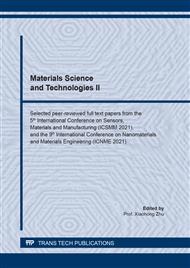p.141
p.149
p.157
p.165
p.175
p.183
p.193
p.199
p.205
Development of Tensile Test Specimens for Fused Deposition Modeling
Abstract:
Standard test specimens are usually used to determine the tensile strengths of plastics. Their shape assumes that the material is homogeneous and only normal stress occur inside their nominal length. Unlike injection molding, which is a common technology to produce plastic parts, the structure of additively manufactured parts is not homogeneous. In areas with variable geometry, an additional internal stress concentration occurs, which often leads to failure of the test specimens outside their nominal length, which in turn compromises the tensile test. The stress concentration increases with the nozzle diameter used. This requires improvement of the test specimens shape. In the present work a new form of the test specimens is proposed, in accordance with the peculiarities of the Fused Deposition Modeling (FDM) process. A series of test specimens have been produced, using a 1mm and 2mm nozzle as well as one wall, no walls and milled specimens with newly developed geometry. All specimens were tensile tested and the results were shown and compared. It has been found that the proposed new shape ensures failure within the parallel length for successful testing, provided infill strands are correctly positioned.
Info:
Periodical:
Pages:
175-182
Citation:
Online since:
April 2022
Authors:
Price:
Сopyright:
© 2022 Trans Tech Publications Ltd. All Rights Reserved
Share:
Citation:


